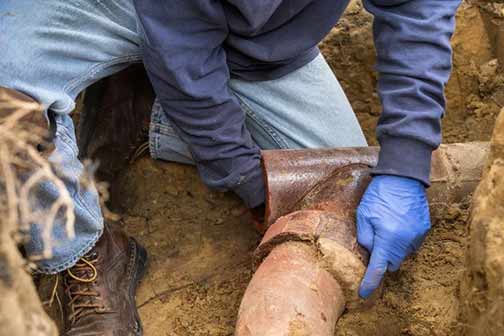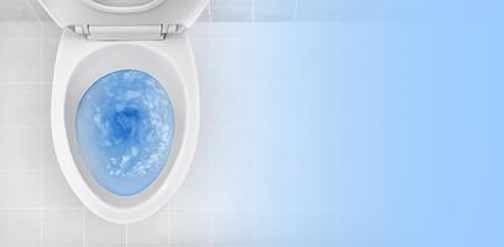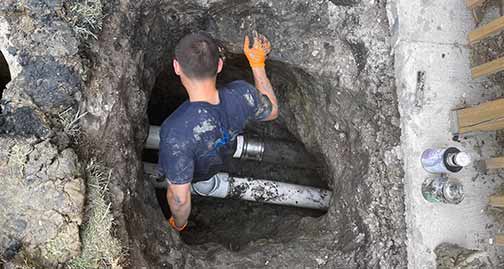
Main sewer line clogs are a common yet significant issue that can disrupt the entire plumbing system of a home or business. Understanding the causes of these clogs and knowing how to address them effectively is crucial for maintaining a healthy and functional plumbing system. Here we explain the common problems leading to main sewer line clogs and provide comprehensive solutions to address these issues.
Common Causes of Main Sewer Line Clogs
There are several factors that can contribute to the clogging of the main sewer line. Identifying these causes is the first step in preventing and resolving clogs. Some of the most common causes include:
Tree Roots Infiltration: A Silent Intruder
Tree roots are naturally attracted to the moisture and nutrients found in sewer lines. Over time, these roots can infiltrate the pipes through small cracks or joints, leading to significant blockages. As the roots grow, they can cause the pipes to crack or even collapse, resulting in severe clogs. Understanding the behavior of tree roots and their relentless search for water can help in devising strategies to protect sewer lines from their invasive nature.
Accumulation of Debris: A Gradual Menace
Debris such as grease, hair, soap scum, and food particles can accumulate in the sewer lines over time. This buildup can restrict the flow of wastewater, eventually leading to a complete blockage. Regular maintenance and proper waste disposal can help minimize the risk of debris-related clogs. Recognizing the types of debris most likely to cause issues and adopting preventive measures can significantly reduce the likelihood of clogs.
Flushing Non-Flushable Items: A Common Mistake
Flushing items that are not meant to be disposed of in the toilet, such as wipes, feminine hygiene products, and paper towels, can lead to severe clogs. These items do not break down easily and can cause blockages in the sewer line. Educating households and businesses about the importance of proper disposal practices is essential in preventing such clogs.

Pipe Damage and Deterioration: An Overlooked Threat
Over time, sewer pipes can become damaged due to corrosion, shifting soil, or external pressure from construction activities. Damaged pipes are more susceptible to clogs and can lead to costly repairs if not addressed promptly. Understanding the factors that contribute to pipe damage and implementing regular inspections can help in identifying and addressing potential problems before they escalate.
Effective Solutions for Main Sewer Line Clogs
Once the cause of a sewer line clog is identified, implementing the appropriate solution is essential. Here are some effective remedies for addressing main sewer line clogs:
Professional Inspection and Cleaning: The First Line of Defense
Hiring a professional plumber to inspect and clean the sewer line is often the most effective solution. Plumbers use specialized tools, such as cameras and hydro jetting methods, to identify the cause of the clog and remove it efficiently. Regular professional inspections can also help prevent future clogs. Understanding the benefits of professional services and knowing when to call in the experts is crucial for maintaining a healthy sewer system.
Root Removal and Prevention: Protecting Your Pipes
If tree roots are the cause of the clog, removing them is crucial. This can be done using mechanical augers or chemical root killers. To prevent future root infiltration, consider installing a root barrier or replacing old pipes with more resistant materials. Understanding the options available for root management and choosing the right solution for your situation can help in safeguarding your sewer lines.
Proper Waste Disposal Practices: A Simple Yet Effective Strategy
Educating household members or employees about proper waste disposal can significantly reduce the risk of clogs. Avoid flushing non-flushable items and dispose of grease and food waste in the trash instead of down the drain. Understanding the impact of improper disposal and implementing simple changes in daily habits can make a significant difference in preventing clogs.

Pipe Repair and Replacement: Addressing Structural Issues
For clogs caused by damaged or deteriorating pipes, sewer pipe repair or replacement may be necessary. Trenchless technology, such as pipe lining or pipe bursting, offers a less invasive and more cost-effective solution for repairing or replacing damaged sewer lines. Understanding the latest advancements in pipe repair technology and choosing the right method for your needs can help in resolving clogs efficiently.
Preventive Measures to Avoid Future Clogs
Prevention is always better than cure, especially when it comes to sewer line clogs. Implementing preventive measures can save both time and money in the long run. Here are some tips to prevent future clogs:
Regular Maintenance: A Proactive Approach
Schedule regular maintenance with a professional plumber to clean the sewer line. This proactive approach can help identify potential issues before they become major problems. Understanding the importance of regular maintenance and adhering to a schedule can help in preventing unexpected clogs.
Install Drain Strainers: Keeping Debris at Bay
Installing drain strainers in sinks, showers, and tubs can help catch debris and prevent it from entering the sewer line. Clean the strainers regularly to ensure they function effectively. Understanding the benefits of drain strainers and choosing the right type for your needs can help in preventing debris-related clogs.
Monitor Water Usage: Conserving Resources
Excessive water usage can strain the sewer system and increase the likelihood of clogs. Monitor water usage and fix any leaks promptly to prevent unnecessary stress on the sewer line. Understanding the impact of water usage on the sewer system and adopting water-saving practices can help in preventing clogs.
Conclusion: Ensuring a Smooth-Running Sewer System
Main sewer line clogs can be a major inconvenience, but understanding their causes and implementing effective solutions can help maintain a smooth and efficient plumbing system. By addressing clogs promptly and taking preventive measures, homeowners and businesses can avoid costly repairs and ensure the longevity of their sewer lines. Understanding the importance of proactive management and making informed decisions can help in maintaining a healthy sewer system for years to come.

